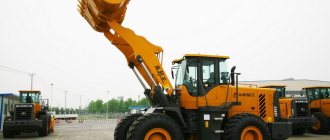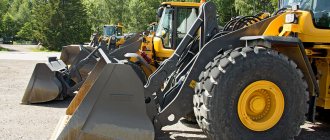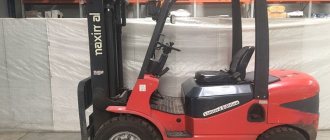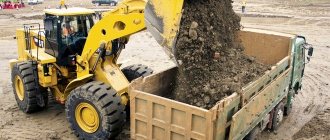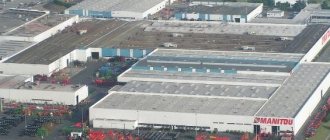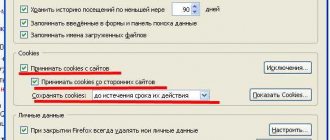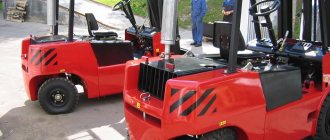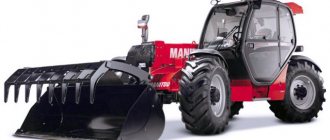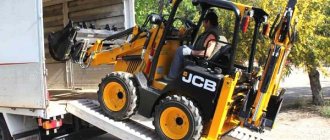TSM is a Japanese company specializing exclusively in the production of various loaders with wide functionality. They have the capabilities to load, clean and unload a variety of small and large bulk materials and goods, as well as carry, lift and stack intermodal merchandise items.
Asia MH - sales and service of forklifts
| Selecting a loader manufacturer All manufacturers |
| Amkodor Borex VTZ VgTZ Volzhsky forklift Donex Dorelectromash Elaz Inter-Don Kirovets Kranex Kurganmashzavod LTZ Lvov forklift MZiK |
| Loaders.com | Forklifts for sale | Directory of companies | Prices | Forklift catalogs |
Forklift catalogs
TCM
→ Forklift manufacturers
| Selecting a loader type All types of loaders |
| Bulldozers Forklifts Pallet trucks Order pickers Skid steers Lift tables Reach trucks Reach stackers Telehandlers Wheel loaders Stackers Excavators Backhoe loaders Electric pallet trucks Electric tractors |
| Selecting a loader manufacturer All manufacturers |
| Amkodor Borex VTZ VgTZ Volzhsky forklift Donex Dorelectromash Elaz Inter-Don Kirovets Kranex Kurganmashzavod LTZ Lvov forklift MZiK |
| Forklift TCM FHB20-E1 Forklift FHB20-E1, TCM, — Forklifts |
| Forklift TCM FHB25-E1 Forklift FHB25-E1, TCM, — Forklifts |
| Forklift TCM FHB25-E1L Forklift FHB25-E1L, TCM, – Forklifts |
| Forklift TCM FHB30-E1 Forklift FHB30-E1, TCM, — Forklifts |
| Forklift TCM FHB30-E1W Forklift FHB30-E1W, TCM, – Forklifts |
| Forklift TCM FTB13-E1 Forklift FTB13-E1, TCM, – Forklifts |
| Forklift TCM FTB15-E1 Forklift FTB15-E1, TCM, – Forklifts |
| Forklift TCM FTB15-E1S Forklift FTB15-E1S, TCM, – Forklifts |
| Forklift TCM FTB16-E1 Forklift FTB16-E1, TCM, – Forklifts |
| Forklift TCM FTB18-E1 Forklift FTB18-E1, TCM, – Forklifts |
| Forklift TCM FTB18-E1L Forklift FTB18-E1L, TCM, – Forklifts |
| Forklift TCM FTB20-E1 Forklift FTB20-E1, TCM, – Forklifts |
Pages: next page →
1
2 3 4 5 6 7 8 9 10 11 12
This is interesting: Types and technical characteristics of Toyota forklifts: diesel, electric, gas-gasoline
Loaders with wide functionality from the Japanese company TSM
TSM is a Japanese company specializing exclusively in the production of various loaders with wide functionality. They have the capabilities to load, clean and unload a variety of small and large bulk materials and goods, as well as carry, lift and stack intermodal merchandise items.
Who is the manufacturer, country and more
TCM Corporation is the oldest Japanese forklift manufacturer . The company was founded in 1949 , at the same time the country's first forklift was produced. Today the corporation continues to produce lifting and transport equipment. It has a well-deserved reputation throughout the world for producing products of high reliability, safety and quality . The main production of TCM is located in Japan, including the Shiga plant, which specializes in the production of loaders. This plant is a supplier of products to the Russian market. Since 2003, Hitachi Construction Machinery Co., Ltd. becomes the owner of a controlling stake in TCM Corporation, and TCM becomes a structural industrial division of this corporation.
Forklifts
TSM forklifts are used for lifting, moving and stacking various loads weighing up to 10 tons.
Photo of TSM forklift
Peculiarities
Popular models of forklifts from TCM make up the “INOMA” series. These machines use two-pronged forks as working equipment, suitable for lifting and stacking. INOMA “fork holders” are distinguished by their simplicity of design, ease of maintenance and long-term trouble-free operation, achieved thanks to the following characteristic elements:
- Powerful engines with volumes of up to 6.5 liters, allowing you to reach maximum speed with a load in just 4.3 seconds;
- Anti-corrosion protection of the car roof with tube moisture drains;
- High-speed ascent with a speed of at least 390 mm/s;
- Automatic transmission;
- Electronic control;
- Single motor braking function;
- Operator comfort (improved visibility, ergonomics of the cabin interior, noise reduction);
- Safety of actions - on top of the machine there is a safety grill built into the roof.
ATTENTION! When working on a TCM forklift, you should be careful with the headlights: they are not protected from mechanical damage, while the rear lights are completely protected by the roof pillars.
In addition to the simple “INOMA”, the company can also offer a series of forklifts of the original modern design Acroba. They are equipped with a 4-wheel steering system, are very maneuverable and are complemented by other cutting-edge technologies.
Specifications
Technical characteristics of popular models in the table:
| Model | FG20T3 | FG30T3 | FD60Z8 | FD100Z8 |
| engine's type | petrol | petrol | diesel | diesel |
| Width (along track), mm | 970 | 970 | 1700 | 1700 |
| Ground clearance, min., mm | 110 | 140 | 190 | 245 |
| Weight, kg | 3210 | 4205 | 8630 | 12300 |
| Engine power, hp | 47 | 47 | 155 | 160 |
| Maximum possible speed, km/h | 19 | 19,5 | 26 | 24 |
| Lifting speed, max., mm/s | 580 | 490 | 550 | 410 |
| Load capacity, kg | 2000 | 3000 | 6000 | 10000 |
Video review of the TSM forklift:
Frontal
This equipment is used not only for loading and unloading operations, but also for clearing roads. Front loaders from TSM work with quick-release equipment. The design of the chassis and transmission made it possible to adapt the equipment to Russian conditions. These are machines with increased maneuverability and increased traction force, which allows them to be used on soils with a low coefficient of adhesion.
the SSL-709 mini skid steer front loader . Its layout is classic: a double-beam boom and a hydrostatic transmission with chain wheel drive. The bucket lift design follows a radial pattern. At the end of the boom there is a mechanism for quickly changing attachments, which makes this model compatible with Bobcat.
Specifications:
- bucket volume (m3): 0.35;
- load capacity (kg): 690;
- tipping load (kg): 1400;
- forward/backward speed (km/h): 12;
- traction force (kN): 24.5;
- rear turning radius (mm): 1380;
- machine length with bucket (mm): 3090;
- ground clearance (mm): 185.
Types of TSM loaders by drive type and their classification
The company's products, due to their quality and reliability, are in demand all over the world. The equipment is relatively inexpensive, and in some characteristics it is superior to its branded counterparts.
The consumer has the opportunity to choose equipment that runs on the type of fuel convenient for him. There are three main types of drive:
- electric;
- petrol;
- diesel.
Gas equipment is installed on TCM loaders
The TCM electric forklift has a lifting capacity of 1 to 3.5 tons. Such cars are more economical compared to diesel and gasoline ones. Light machine versions are equipped with three supports, and heavy ones with four. The loaders have a short braking distance and protection of the rear wheels from skidding. Due to its environmental friendliness, an electric forklift is an indispensable assistant when working in closed warehouses and large retail outlets.
Gasoline vehicles are produced with a load capacity of 1.5 - 3.5 tons, with various mounting options. They have the ability to combine two types of fuel: gasoline and gas, when equipped with gas equipment (gasoline loaders). Such machines are used in enclosed spaces due to minimal carbon monoxide emissions.
Loaders that consume diesel fuel are in high demand in the CIS market and are manufactured in the following weight categories.
- Multifunctional machines with a lifting capacity of up to 3.5 tons lift loads up to 7 m.
- Units with a lifting capacity of up to 5 tons are equipped with powerful motors (up to 88 hp). They move loads at speeds up to 20 km/h.
- Forklifts with a lifting capacity of up to 10 tons transport loads at speeds of up to 30 km/h and calmly lift them skyward.
- Heavy-duty giants with powerful engines up to 225 hp. confidently handle loads up to 30 tons.
According to external features and their purpose, TSM loaders are classified into the following:
- fork;
- frontal;
- bucket;
- universal mini loader.
Gasoline forklift TSM
Fork units
Two-prong forks are used as working elements on such machines. TCM forklift FD60Z8, especially popular in our market, has the following brief technical characteristics:
- diesel engine, power -155 hp;
- track width – 1700 mm;
- minimum ground clearance - 190 mm;
- maximum speed – 26 km/h;
- maximum lifting speed – 550 mm/s;
- weight – 8630 kg;
- The tcm fd60z8 loader has a load capacity of 6000 kg.
TCM FD70Z8 loader, another popular fork-type model. This model differs from the previous one in having a greater weight (by 730 kg) and a carrying capacity of (1000 kg).
Features of the range
TCM technology is synonymous with reliability and high performance. The first models rolled off the assembly line in 1949, and today the range of equipment for warehouses includes electric, gasoline and diesel TSM forklifts, as well as stackers of various capacities for stacking cargo on racks. The company's product range also includes additional attachments to expand the capabilities of the main equipment.
Still, the backbone is forklifts. Today there are 170 models, which are conditionally included in three groups:
- Diesel engines , which are especially popular on the Russian market. These are machines with a carrying capacity from 3.5 to 43 tons. Regardless of power, this technique is capable of lifting loads to a height of up to 7 meters. “Giants” of this category can be supplemented with grippers of different widths, with the help of which they lift rolls, barrels, bales, and bags. Diesel cars are valued for their high-torque performance, efficiency and ease of maintenance. This technique has found wide application not only in small warehouses, but also in port facilities and railway stations. TCM diesel vehicles are marked FD.
- Gasoline , the carrying capacity of which is 1.5-3.5 tons. They are used both in closed warehouses and in open areas. Compared to diesel ones, the engine of such loaders is designed for a longer service life. The latest models are equipped with additional gas equipment, due to which it was possible to reduce fuel costs and minimize carbon monoxide emissions. Gasoline cars are marked with the letters FG.
- Electric with a lifting capacity of 1-3.5 tons. This equipment is characterized by a high level of environmental friendliness, so it is suitable for use in enclosed spaces. Despite their low power, the machines can handle lifting loads to a height of up to 6.8 meters. The advantage of TCM developments using an electric motor is operation without recharging for 8.5 hours. To reduce energy consumption, the machines are equipped with a multifunction display, which displays information about the operation of the system. TCM marks this line with the letters FB.
Japanese brand equipment can be classified according to its main purpose and appearance:
- forklifts;
- frontal;
- bucket;
- universal machines.
Loader categories: classification and intended purpose
The use of mechanization significantly optimizes production processes and warehouse operations. Carrying out loading and unloading tasks today is simplified thanks to special equipment. In most cases, factory transportation of goods is carried out by a forklift, which also significantly reduces the cost of manual labor. It is a self-propelled wheeled device. Its main task is loading and unloading, as well as stacking objects. The implementation of such tasks occurs with the help of special devices, which determine the type and purpose of such special equipment.
Types and specialization of loaders
Warehouse equipment, which is intended for the transportation of goods, differs in its structure and capabilities. The loader can carry out transportation using a bucket, forks, and tongs. Such devices allow you to grab, transport and lift. It is on the basis of specialization, purposes of use and structure that several types of such equipment are distinguished: Type of tires:
- Pneumatic - have good shock absorption. That is why they should be chosen when working on uneven surfaces.
- Superelastic (solid) tires perfectly withstand the heterogeneous soil structure and are more durable, but have poor shock absorption.
Engine's type:
- Electrical. They are designed for indoor use and require constant charging from the mains. This type of loader is more expensive to operate, and also has a limited operating time without recharging. The main advantage is low noise level and ease of maintenance.
- Special equipment running on diesel, gasoline and gas fuel. The main advantage is the comparative low cost of operation. Since this equipment emits exhaust gases, it should only be used outdoors, and it also has a high noise level.
Features of the lifting device:
- Fork. The grip is carried out with forks that are mounted on a carriage or mast. This type of loader is used in warehouses to transport cargo on pallets.
- Bucket (mounted bucket on forks). Moving is carried out using a mounted bucket and is used for transporting bulk materials and earthworks.
What to look for when purchasing warehouse equipment
When choosing a loader, you should focus on several technical characteristics: parameters, load capacity, tire type, engine features. The surface on which transportation will take place, as well as the specifics of the cargo, is also of considerable importance. In addition, the possible costs of maintaining and repairing such equipment should be taken into account. An excellent option would be if the company where the loader was purchased also provides service repairs.
This is interesting: Dalian electric and diesel forklifts: features, technical specifications, photos and videos
Advantages of technology from Japan
TCM products have earned an excellent reputation among customers. The basic principles of the company's work: durability, reliability and simplicity. The client is offered not only autonomous equipment. TCM is a comprehensive systems approach to intelligent material handling systems and logistics process integration. TCM's policy is to produce simply designed, reliable and easy to maintain machines that are designed to save the client's budget, both at the purchase stage and in subsequent operation. The company's goal is to ensure that TCM products are easy to operate and manage
TCM FD30T3Z forklift. Photo TCM
The corporation brings to the market reliable and durable forklifts for industrial purposes. The equipment satisfies all the needs of customers in its operation, both indoors and outdoors . With extensive experience, TCM covers the entire field of manufacturing, retail, wholesale logistics and distribution. As a manufacturer and supplier of forklifts, TCM remains committed to meeting challenges through simple solutions and innovative technologies. The company's experience in this industry goes back more than half a century, technologies are improving, but one thing remains unchanged - the constant pursuit of excellence and quality.
Maintenance and repair
The manufacturer prescribed the operating and maintenance rules for the TCM electric loader in the user manual:
- Check the unit for damage before each start-up.
- It is prohibited to carry passengers on any type of forklift.
- Before starting the system, check the locking of the battery and fuel tank stops.
- You cannot transport goods that are poorly assembled.
- You cannot stop or move jerkily.
TCM forklift repair and causes of malfunctions:
- Transmission malfunction can be caused by low pressure in the system, dirty oil filters, or a faulty safety valve. It is necessary to adjust the pressure, clean the filters, and replace worn parts.
- Loss of power may be due to low oil temperature or low oil level, or air entering the system. It is necessary to change the oil and remove air.
- If there are problems with the clutch, you should inspect the mechanism for damage and repair it.
We repair equipment only using special equipment and wearing protective clothing: goggles or a mask.
Ergonomics
When working in a warehouse, the operator often has to leave his place, which reduces labor efficiency. Therefore, ease of entry and exit for electric warehouse equipment is an extremely important factor, and the struggle here is for every centimeter. In this aspect, the TCM FB 15-7 loader is an example to follow - the steps are quite wide and located extremely low. The floor level is also reduced by 40 mm compared to previous generation machines. In total, this gives an almost ideal entry-exit algorithm. The steps have a special anti-slip coating, and comfortable handrails are located on the cab pillars.
The operator will be able to sit at his workplace quite comfortably - the hydraulic cylinders are hidden under special pads, leaving space for the legs. An ergonomic seat with a seat belt, armrests and an adjustable backrest provides tangible lateral support without the driver feeling constrained. Thanks to the mast with reduced legs and the front panel lowered as low as possible, visibility from the operator's seat is excellent when driving with the forks lowered. The machine being tested was equipped with a free-running hydraulic cylinder for the carriage, which allows the load to be lifted to a height of up to 1 m without changing the height of the masts. It significantly reduced visibility when the forklift was moving with the forks raised, but this function ensured that the loader could operate in cramped conditions (inside a container or truck) when storing cargo in two tiers. The standard version of the loader does not have such a cylinder.
Hydraulic control levers are traditionally located to the right of the steering wheel and are painted in different colors for better identification and ease of operation. The liquid crystal digital display located on the steering column is made as a single unit and contains only the most necessary information - speedometer, hour meter, battery charging and loader operating mode indicators.
Loader classification|Occupational safety and training
Loaders
Loader
Loaders have found wide application in loading and unloading operations of enterprises. Their maneuverability and ease of operation allow women to work as a forklift driver as well.
The requirements for the design and safe operation of forklifts are reflected in the Inter-industry rules for labor protection during the operation of industrial transport (floor-mounted trackless wheeled vehicles) POTRM-008-99
Loader classification:
- by drive – electric forklift, auto-loader and tractor;
- automobiles are carburetor and diesel;
- fuel – gasoline, diesel fuel, gas;
- by type of lifting device, the most common are forks, various grips - for barrels, rolled materials, for bulk materials - buckets, platforms (called electric trolleys). There are a great variety of lifting devices on forklifts, there are even special ones, such as installing tires on a BelAZ;
- according to the location of the lifting device - front, side;
- by the number of support wheels;
- on tires
- by carrying capacity.
ISO classification of loaders:
- class I – electric forklifts;
- class II - loaders for working in narrow aisles, this also includes reach trucks;
- class III – stackers and trolleys;
- class IV - automobile loaders with an internal combustion engine with solid tires;
- class V - automobile loaders with an internal combustion engine with pneumatic tires;
- class VI – conveyors;
- class VII - “off-road” loaders of all types.
In principle, they can be divided into electric forklifts and automobile ones.
The advantage of an electric forklift is silent operation, no exhaust gases, and greater maneuverability.
The disadvantages include dependence on batteries - a full charge lasts for 10 hours of operation.
]
Post all questions on the forum
Once again about TSM loaders
Home > Archive of articles from our newsletter >Issue No. 48. Article No. 1.
Print version >>
| JSC Mikhnevsky RMZ supplies TSM forklifts: | |
| Loading capacity from 1.0 to 10.0 tons. With various attachments: - rotating clamp, - rotating forks, - side shifting mechanism, - two-stage VFM mast, - fork positioning device, - articulated forks, - steel cab with air conditioning. All TSM loaders can be equipped with replaceable attachments from the MKSM-800 loader >> | Svetlana Lapshina works with you |
| TSM forklift catalog >> Prices for TSM forklifts >> | |
| 8-800-550-07-58, multi-channel. | |
An analysis of the special equipment market shows that in the last year or two, interest in higher quality imported loaders among domestic consumers has increased significantly. There are several reasons for this.
Firstly,
the cost of a new Japanese loader has approached the cost of Russian and Bulgarian-made analogues.
Secondly,
offers for imported equipment have increased, including the availability of forklifts in warehouses, the availability of spare parts, service, warranty obligations, and leasing and credit sales schemes have been launched.
And finally, and
perhaps most importantly, encouraging trends have emerged in the Russian economy. Enterprises in the consumer and construction industries and the printing industry began to develop quite dynamically; a significant part of consumers now not only wants to have higher quality, high-performance and durable equipment, but is also ready to purchase it.
These are the reasons that contributed to the entry of the Japanese company TCM Corporation
, which is a pioneer in this material handling equipment sector. Along with loaders, TSM Corporation offers a large selection of equipment and systems designed to move and lift a wide variety of loads.
| ABOUT COMPANY … |
Currently, in the company's turnover structure, forklifts account for 36%, wheel loaders - 18%, crane equipment and mining equipment - 27%, spare parts production - 17%, and the annual total sales volume, despite the general decline in demand and stagnation in the Japanese economy is 713 million euros (based on the results of 2001).
In addition to the above activities, in recent years, much attention has also been paid to the development and creation of equipment for processing universal containers.
Along with two factories located in Japan itself (Ryugasaki)
and
Shiga
), the company has its own production units in
Belgium
and
the USA,
as well as a developed network of dealers
(73 companies) in Europe
.
The sales of products in Germany
and
France
have been carried out for several years by the English company
, which imports, leases and services forklifts of various brands, as well as buys used equipment and supplies spare parts.
Recently, the city of Willich received the right to sell equipment from TCM Corporation in Germany .
Of course, the most important place in the production program of the Japanese company belongs to the development and production of warehouse equipment. It is no coincidence that among manufacturers of lifting and transport equipment for handling cargo on pallets, TSM Corporation is known as the company that produced the first Japanese forklift. This happened more than fifty years ago, and then the company’s specialists were convinced that the role of such machines in the transportation of goods would constantly increase as industry developed; however, the time when their functions were limited to only this has passed.
A modern forklift must be a universal mechanism, that is, it must have a whole range of properties useful to the consumer and be able to perform a wide variety of operations. Both the quantity of the latter and the requirements for the quality of their implementation are growing from year to year, and therefore the loader, like any other equipment, needs constant improvement. In fact, at TSM Corporation, hoisting and transport machines and systems of more than ten types are subject to annual modernization, and the main directions for improving the company’s products are determined primarily on the basis of consumer requests.
| ABOUT THE PRODUCTS… |
The annual production volume of loaders at the company's Japanese enterprises is approximately 12-15 thousand units.
This figure is relatively small by global standards and lower than that of a number of the company’s competitors. However, in justification, it is worth noting that historically TCM Corporation has concentrated its efforts primarily on developing the Japanese market, where in some segments, in particular, in the production of heavy forklifts, it has firmly taken a leading position and has a large number of corporate clients .
However, products bearing the same name quickly gained fame and are now widely used throughout the world; and in some countries its very name has even become synonymous with forklift. Currently, TSM Corporation offers a full range of standard sizes of forklifts, consisting of 6
main series.
The main distinguishing feature of their design is simplicity: the deliberate rejection of unnecessary bells and whistles and complex electronics has a positive effect on both the reliability and cost of operating the equipment.
| TSM loaders with a capacity of 5 tons |
| TSM loaders capacity 16-23 tons |
TSM Corporation specialists consider their forklifts with internal combustion engines to be the most maneuverable, easy to control and durable of all machines of this class developed in recent decades. To meet the wishes and needs of consumers, TSM Corporation has improved the design of previous models.
New 1-3 ton
models (
FG/D10-30
) (
FG
- with petrol and gas,
D
- with diesel engine) are distinguished by a more modern appearance, improved design of the brake and accelerator pedals and a comfortably equipped cabin.
In terms of its environmental parameters, the new
C240
diesel engine not only fully complies with the UN exhaust gas control law, but also meets similar requirements of the American Environmental Protection Agency. Thus, the negative impact that this technology has on the environment is minimized.
New H20 petrol engine
equipped with
an F
-shaped cooling fan and a stabilized regulator to optimize low-speed modes with high torques,
the power of the current generator has been increased
35 A
to
50 A. Torque at idle speed (about 1000 rpm
) has been increased by
10%
.
A set of measures was also taken to improve the safety of new models:
—
forward visibility has been improved
15% — increased comfort of the operator’s seat with seat belts; — the protection of the driver’s cab has been enhanced (the protective fence of the cab meets international standards ISO 6055
and
JIS 6021
); — the design of the power lifting cylinder ensures the absence of shocks; — the lift tilt cylinder is covered with a protective casing; — the parking brake lever is locked.
Nadeau was the first designer of the lift's supporting frame
, which ensured unhindered surveillance of the cargo handling area. Improved visibility and a reduction in the area of the so-called “dead spot” in the new models is achieved through the use of a new frame design and a low-profile front panel, which provides the operator with visibility of the fork ends in the working position. The rigid frame design - the pride of Japanese designers - is particularly reliable and has sufficient strength to withstand the off-axis loads that arise during the operation of the loader and is easy to maintain.
Much attention is paid to issues of ease of use.
.
Lighting and alarm controls are now combined in one combination lever; The turn signal is equipped with an auto-off mechanism, and the use of an electric gear shift control system simplifies the operator's work. Vibration has been reduced, especially from the steering wheel and brake pedal (by 50%
), and the force of pressing the brake pedal (by
20%
),
the noise level has been reduced 79-80 dB The performance of work operations has been simplified due to the introduction of certain improvements in the design of the working equipment and improved forward visibility.
In addition to these models, the standard range of TCM vehicles with an internal combustion engine includes:
— loaders with a lifting capacity
of 3.5
to
5.0 tons
(
FG/D 35-50
). They are characterized by increased loading/unloading speed and low noise level during operation; a powerful mast that provides good visibility and reliable brakes with hydraulic booster.
- loaders from 6
up to
10 tons
(
FD 60-100
) are equipped with a low-emission engine with a rated power of
122 hp.
, equipped with an exhaust gas purification system, which ensures a reduction in smoke by
30%
and a reduction in toxic components by
50%
.
Models in this series have exceptionally high fork lifting speeds (for example, for the FD60
this parameter reaches
510 mm/s
with a load).
"TSM Corporation" is one of the few manufacturers of heavy forklifts
Loaders with high-power internal combustion engines
suitable for transporting products from large engineering and metallurgical enterprises, universal (sea)
20-
and
40
-
foot
containers and other heavy loads.
13
TSM models with internal combustion engines and various load capacities stand out among analogues from other manufacturers with their low noise level and three-speed transmission, and in addition, they have the highest fork lifting speed in their class.
Moreover, super-heavy loaders (37-43 t lifting capacity)
are equipped with high-tech equipment, which will allow them to be adapted to the standards that will be adopted in the coming years without significant modifications, and will increase their load capacity.
The most powerful model, a 43-tonne loader
, is capable of stacking up to five tiers of universal containers.
By increasing the efficiency of power transmission in the transmission and adopting a highly efficient electronic control unit
and
high-pressure and low-rolling-resistance tires
, TCM Corporation engineers have developed a series of
18
classic
electric forklifts with counterweight
, each of which is capable of working eight hours a day without a break. The company's specialists were able to achieve success in significantly reducing the charging time of batteries and in developing a comfortable cabin with an elastic seat and a vibration-absorbing shock absorber, a low floor and comfortable steps.
High-performance electric forklifts create environmentally and safety-friendly working conditions, and are also the most maneuverable and easy to control. TSM Corporation continues to plan to increase the number of its electric forklift models in order to better meet consumer requirements.
The range of electric forklifts with increased lift height includes 14 models:
These machines combine high loading performance and economic efficiency. Their ability to turn and go around sharp corners makes them especially suitable for working in tight spaces, particularly in busy warehouses.
The main advantages of these devices include:
- the longest continuous operation time among machines in its class, which is achieved by significantly reducing energy consumption (30 %
);- particularly precise regulation of the battery charging process (this is the first such system introduced in this industry);
- fully automated (microcomputer-controlled) charger for continuous, uniform supply of electricity;
- operator's seat shock absorber providing protection from harmful influences ( 65%
,
20%
).
All TSM loaders, in addition to the standard equipment, can be equipped with two and three-stage lift stands (VFM and VFHM)
; additional attachments (wide carriage, swivel forks, paper grip, etc.); double front wheels and widened fender; massive or colored tires and other options.
| "ACROBA" - LOADER OF THE 21st CENTURY Four years ago, the company developed a series of Acroba loaders with an internal combustion engine, consisting of 6 models (lifting capacity from 1.5 to 4.0 tons). After demonstrating the first samples of Acroba to the general public, Japanese magazines wrote: “It was a magic show... The forklift, which had started out moving like everyone else, back and forth, suddenly turned its front and rear wheels and started moving sideways like a crab.” A distinctive feature of the Acroba loader design is that it can move perpendicular to its longitudinal axis. This function is especially convenient for servicing premises with limited dimensions, where previously carrying out such work with a standard loader was (or) simply impossible or required additional maneuvers, which means increased cargo handling time. Typically, these types of lifts cannot move items that are longer than the width of the warehouse aisle. Acroba loaders easily cope with these hitherto insoluble difficulties... Interestingly, they are in greatest demand in European countries, in small warehouses where there is not enough space for maneuvering... |
Acroba loaders
Four years ago the company developed the Acroba
with an internal combustion engine, consisting of
6 models
(lifting capacity from
1.5
to
4.0 tons
).
After the first examples of Acroba were shown to the general public, Japanese magazines wrote: “It was a magic show... The forklift, initially moving like everyone else, forward and backward, suddenly turned its front and rear wheels and began to move sideways like a crab.”
.
Indeed, "Acroba"
Without any stretch of the imagination, it can be called
a loader of the 21st century
.
According to a number of competent experts, today it serves as a world standard: from the very beginning, the equipment of this series was developed in accordance with the most modern standards.
The diesel model embodies four innovations pioneered in this sector of the automotive industry:
- possibility of movement in the transverse direction;
- zero turning radius;
- rotating 45
degrees. operator's seat, which simplifies and increases safety of work;- hydrostatic drive HST
2x2
wheel arrangement , which significantly increased the adhesion of the wheels to the road surface.
To date, about 6 thousand
of these wonderful machines have been sold all over the world. Interestingly, they are in greatest demand in European countries, in small warehouses where there is not enough space for conventional forklifts to maneuver, and in Japan itself these models are most often used in enterprises involved in the cultivation and processing of rice.
Following global trends towards the transition to more environmentally friendly cars in 2001
"TSM Corporation" has developed a series of electric forklifts
"Acroba" of 4 models (g/c 1.5 - 3.0 tons)
.
They are distinguished by two useful improvements: a 30%
increase in generated power and a significantly simplified electrolyte filling system.
These models are planned to be put into mass production in the near future, and there is every reason to assume that in Europe, where environmental requirements are growing every year, they will be even more popular than diesel cars.
| "TSM" IN RUSSIA... |
It must be said that TSM loaders are not new to the Russian consumer. 4 thousand were imported to us under a contract with V/O Machinoimport
loaders of this brand. There were also some one-time deliveries.
Thanks to their high reliability and simplicity of design, these machines still work, delighting their owners. Now many of them have the opportunity to update their fleet of worn-out and outdated equipment without making a request to a distant Japanese manufacturer.
Currently, TSM loaders are successfully supplied to Russia. And even those who have never used this technique before will be pleasantly surprised to see it in action.
In conclusion, I would like to draw attention to one misunderstanding associated with the name “TSM”
.
Not long ago, “Heli”
, produced in
China
, which some consumers mistakenly mistake for “TSM” equipment.
Indeed, about 20 years
ago, the Chinese
acquired a license for the production of Japanese loaders, but these relations were interrupted and now, according to the assurances of the director of TCM Corporation for international relations, Mr. Yasuhiro Noda, Heli brand loaders do not have nothing to do with TSM
.
Specialized magazine "Lifting and transport equipment", No. 10(39), /2003 Subscribe to the magazine: https://www.pto.ru
Device Features
The loading equipment device includes the following parts and mechanisms:
- AC motor. It consists of a cylindrical stator, which is made of steel sheets. The axes are located on it at an angle, and the poles of the windings go to the terminal. The engine is also equipped with a rotor, ventilation system, and generator.
- Unit control system. This includes the gearbox and electrical equipment.
- Chassis.
- Brake mechanism. It is equipped with a hydraulic booster for better traction.
- A load lifting device is a retractable mast onto which a load is placed for transportation.
- Tires.
- Optional equipment. This could be a snow blower, a special clamp for transporting household appliances, etc.
- Rechargeable batteries that power the entire electrical system of the forklift.
Alternating current
TCM Series 7 electric forklifts are equipped with 11.5 AC traction motors; 13.1; and 17.3 kW. Equipment with a lifting capacity of up to 2 tons is equipped with the least powerful engine (11.5 kW), but as practical tests have shown, even with this, a 1.5-ton loader behaves very well and produces good dynamic performance. Using a special controller, the operator can regulate the operating mode of the floor-mounted transport equipment, including both the speed of the loader itself and the speed of lifting and tilting the mast. TCM FB 15-7 has three fixed operating modes - super, enhanced and economical. Naturally, the latter mode is capable of ensuring the longest possible operation of equipment on a single battery charge. But changing the regime is not just a marketing ploy by the manufacturer. When the economy mode is turned on, the machine becomes “sluggish”; even with a sharp press on the gas pedal, the loader accelerates as if reluctantly, into a roll. In the “super” mode, the situation is the opposite - with the slightest press on the gas pedal, the car takes off, the empty forks “fly up” almost instantly. Needless to say, with this mode of operation, the battery discharges quite intensively. The installation of an AC motor made it possible to use an energy recovery system on the loaders, which increases the operating time of the electric forklift on one charging cycle. When changing the direction of movement, braking with the engine or coasting, the electrical equipment generates energy to charge the battery. Therefore, when operating an electric forklift, it is recommended to use the brake pedal only in cases of emergency braking. In other situations, it is advisable to brake with the engine - this way you will extend the life of both the brake pads and the batteries. By the way, the brake pedal is not a floor pedal, but a suspended one, which causes some inconvenience when braking. The saving grace is that you rarely have to use the brake pedal.
An 8.6 kW electric pump capable of creating a pressure of 145 kg/cm3 is responsible for the operation of the hydraulic equipment. Thanks to the use of a separate pump for attachments, the designers were able to avoid unnecessary energy costs for servicing hydraulic equipment during straight-line movement of the equipment - the pump is switched on only at the moment of lifting the load. This design also made it possible to increase the operating time of the loader on a single charge. In addition, the speed of raising and lowering the carriage has increased without losing the information content and precision of control of attachments.
Technical characteristics of forklift TCM FB 15-7
| Load capacity, kg | 1500 |
| Gross weight (without battery), kg | 2015 |
| Fork lift height, mm | 3000 |
| Wheelbase, mm | 1250 |
| Mast tilt angle forward/backward, degrees. | 06.12.09 |
| Height along the protective roof, mm | 2050 |
| Length with forks, mm | 2875 |
| Width over tires, mm | 1070 |
| Fork free play, mm | 155 |
| Fork dimensions (length, width, thickness), mm | 920x100x35 |
| Ground clearance at the center of the wheelbase, mm | 95 |
| Turning radius, mm | 1700 |
| Forward speed with/without load, km/h | 14/ 16 |
| Fork lifting speed with/without load, mm/s | 350/ 580 |
| Fork lowering speed with/without load, mm/s | 430/ 565 |
| Electric motor power, kW | 11,5 |
| Battery voltage/capacity, V/Ah | 48/ 400 |
| Tires | Pneumatic: front 6.00-9-10 PR, rear 16×6-8-10 PR |
The advantage of Japanese-made equipment
TSM machines are valued for their high service life. The manufacturer provides a guarantee for its equipment for up to 5 years or up to 5000 operating hours. One of the advantages of this brand was the elimination of complex electronic components, which made it possible to reduce repair and maintenance costs.
In Russian factories you can most often see diesel models. They are valued for their high performance and speed of raising and lowering the forks. On average power units it is 54 cm/s on the rise with a load and 55 cm/s without a load. Regardless of the model, the cars are equipped with a two-speed automatic transmission, and modes are switched with just one touch of the accelerator pedal. The same transmission is installed on gas-gasoline loaders.
Despite the massive abandonment of diesel among leading automakers, TCM is confident in the safety of its engines and claims to comply with Tier 2 emissions requirements. This was achieved by updating the pre-chamber ignition system. In addition to reducing gas emissions, it provides additional power and speed to the loader itself.
Heavy-duty machines used in harsh conditions provide good performance thanks to the robust differential and frame-mounted axles.
TCM loaders (all models) are equipment designed with the operator in mind. They have a fundamentally new mast: the expanded distance between the lifting chains made it possible to increase visibility of the frontal area by 10%. An ergonomic seat with suspension and tilt functions was added for the operator. Its high sides and back guarantee safety when working on slopes. The driver's protection system is a belt with an automatic unlocking function in a critical situation.
Additional equipment, complete set
The standard package already includes everything necessary for work:
Equipment:
- wide view mast
- standard forks
- power steering
- asbestos-free brakes
- hour meter
- durable pneumatic tires
- Donaldson cyclone type air filter
- fuel water separator
- hydraulic return filter
- hitch
- dipsticks for checking oil levels
- 2-section hydraulic distributor
- high air intake
- pre-heating of glow plugs
- lift speed limit valve
- mast tilt lock valve
- parking brake
- lockable cylindrical hood strut
- oil radiator
- Headlights
- direction indicators
- rear combination light
- removable side panels for easy access under the hood
- set of tools
Controls:
- levers for tilting the mast and raising/lowering the forks
- direction switch control lever
- Parking brake lever with lock
- adjustable steering column
- large pedals with rubber coating
- steering column turn signal switch
Ergonomics and safety:
- adjustable seat with seat belt and lateral support
- large rear view mirror
- footrest with anti-slip coating
- large floor mat
- protective metal frame
- rain visor
- cargo guard
- headlight protection
- neutral safety mechanism
- handrail for easy entry
- horn
- reverse signal
- pocket for documents on the back
- removable and portable glove box
- document clip
Indicators and pointers:
- Fuel level indicator
- battery charge indicator
- glow indicator
- engine oil pressure warning indicator
- coolant temperature gauge
- transmission oil temperature indicator
- neutral safety indicator
- fuel water sump indicator
Seventh series of INOMA loaders
In 2005, fundamentally new TSM loaders of the INOMA generation entered the market. No new forms were added to them; on the contrary, the models turned out to be very simple. The update affected performance. The technical characteristics of the seventh generation TCM loaders have made them leaders. By updating the engines, the manufacturer managed to reduce the time spent on loading and unloading operations. The advantages of the TSM brand described above reveal the features of the seventh generation of Japanese technology.
The INOMA series has been known in Russia since 2005, but over the 14 years of its successful existence it has undergone changes:
- reduced the weight of the instrument unit and weight distribution, thereby increasing the level of stability and stabilization;
- changed the engine cooling system and hydraulic system;
- optimized visibility of the upper zone, which simplified the operator’s work and increased the level of safety in using forklifts in enterprises;
- added two freewheel cylinders instead of one, which in the Acroba series was located in the center of the mast.
Service
The tested loader has a built-in charger in the base, which allows you to charge the battery without removing it from the loader, for example, during overnight parking. TCM Series 7 forklifts only allow for vertical battery removal from the machine. The side extraction function is not provided even as an option. To make handling the battery easier, you can only order a special battery box with lifting brackets. The connection connector is located on the outside of the battery behind the operator's feet.
The battery box has a universal size, so installing a high-capacity battery will not require additional re-equipment. The standard battery is secured with a metal corner, which, when installing a larger battery, is simply removed, freeing up additional space.
The number of daily monitoring points on TCM electric forklifts is reduced to a minimum. Checking the electrolyte level in batteries will take a matter of seconds - a control float is installed in each can, and if it is necessary to add liquid, it simply will not float up. For the easiest possible access to the electronic “brains” of the equipment, the controllers are located in the rear of the loader and behind the side panels under the steps.
Often, modern requirements for safety, environmental friendliness and productivity force companies to modify the designs of loaders, use complex electronic systems, and install the latest components and assemblies, which does not always have a positive effect on the reliability of the equipment, especially in difficult Russian operating conditions. Nevertheless, the designers of the TCM company managed to create the most simple and reliable electric forklift, while meeting all modern standards and consumer demands.
